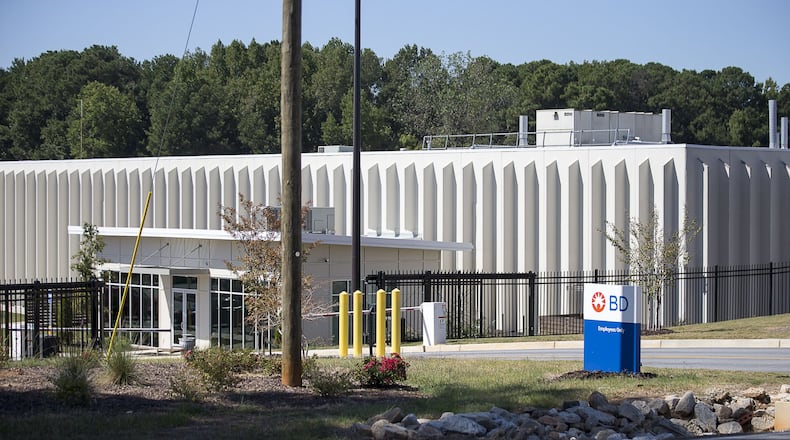State regulators accused a Newton County sterilization plant on Friday of violating a consent order related to its use of ethylene oxide, a carcinogenic gas.
The allegation comes on the heels of a separate notice of violation issued to Becton Dickinson Wednesday after air tests showed an off-site warehouse used to store sterilized products could be emitting 5,600 pounds of ethylene oxide a year.
The EPD issued a list of demands, including temporarily suspending most operations at the warehouse and applying for a permit for it. It also sought increased air monitoring around the facility and at nearby residences and the closest school.
In its response filed Friday, BD agreed to the state’s terms. It also disclosed for the first time the existence of a second warehouse it described as an overflow facility.
In a statement, EPD said BD's failure to identify and monitor this warehouse is a violation of the October 28 consent order with the state that averted a potential long-term shutdown of the company's sterilization operations in Covington.
In addition to complying with the state’s demands for the first warehouse, the company has agreed to conduct air monitoring at this second warehouse before removing all product by Dec. 23.
The state will now seek to amend the consent order to include an updated plan for the first warehouse, and to address “the violation of the consent order by failing to disclose and monitor the second warehouse.”
BD is one of several medical sterilization facilities across the state that are legally permitted to use ethylene oxide, including Sterigenics in Cobb County. The chemical has come under increased scrutiny, however, since the federal government reclassified it in 2016 and concluded it was toxic at much lower levels that previously thought.
About the Author
Keep Reading
The Latest
Featured


